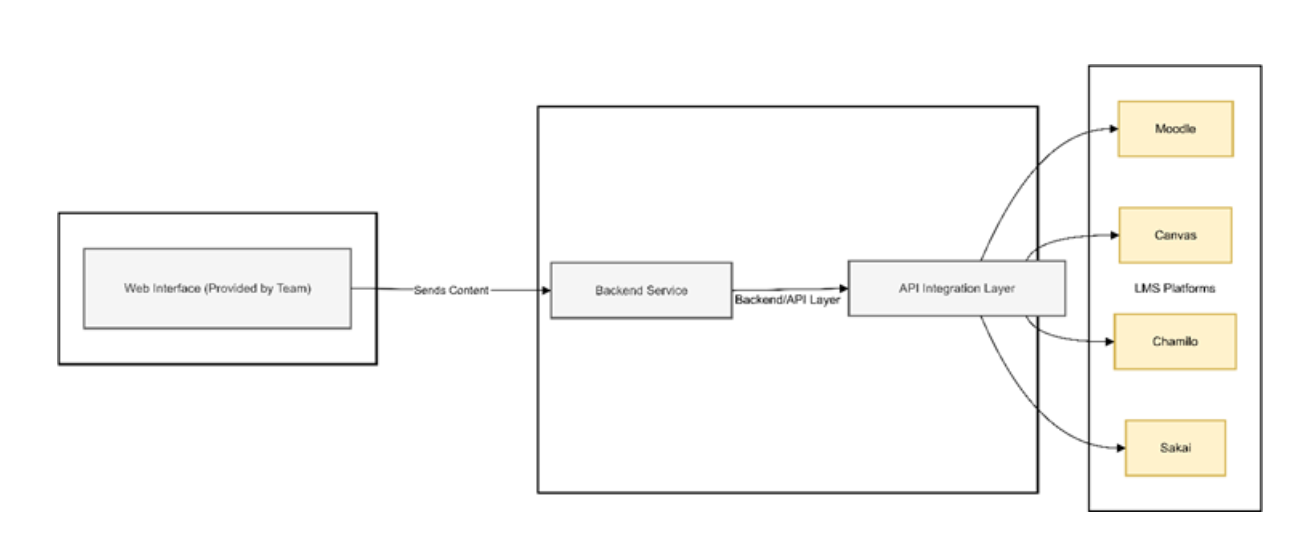Open Mainframe Project Summer Mentorship Series: Midterm Updates – At this midpoint, our selected mentees are reporting in. Below, you’ll learn what they’ve built, the challenges they’ve overcome, and their goals for the rest of the summer. We’re proud of every contribution and eager to see what comes next. Hear from Meena Chand, University of Wolverhampton, United Kingdom below.
Introduction
I’m part of the Open Mainframe Project Summer 2025 Mentorship, working with Dr. Cameron Seay and Jeff Brown. The project goal is to build a simple tool that helps teachers manage their course content across different learning platforms like Moodle, Canvas, Chamilo, and Sakai.
Many instructors today are engaged with multiple institutions, each using a different LMS. This project seeks to address the growing need for a centralized solution that enables educators to manage content seamlessly without switching between multiple platforms.
Getting Started
We began by setting up a Slack group to talk and plan. I learned that we all live in different time zones – I’m in the UK, and my mentors are in the US. We agreed to have weekly meetings on Thursdays to share updates and get feedback.
At first, I misunderstood the project goal. I thought I was supposed to build a simple LMS. But Jeff explained it clearly: the project is to build a tool (wrapper or app) that helps teachers upload and manage learning content across multiple platforms easily.
What I Have Done So Far
- I joined the mentees’ Slack channel.
- I shared my first project plan document and updated it after feedback.
- I studied how LMS platforms like Moodle, Canvas, Chamilo, and Sakai work.
- I researched their APIs to understand how to connect our tool with them.
- I learned that Blackboard cannot be used because it is not free.
- I have raised technical and strategic questions around the project scope, including automation, user interaction, and the role of analytics.
Technical Setup
To support development and testing, Jeff provisioned four virtual machines (VMs), each configured with a different LMS. I was given secure SSH access to all systems, allowing me to interact with the LMS servers directly through the terminal.
Jeff also informed me that he would provide access credentials for a client VM where I will perform the core development work for the integration tool.
In our discussions, I asked about expected features such as automation, manual override capabilities, and analytics. Jeff emphasized the following:
- Prioritize Moodle as the initial target LMS.
- Focus on automation so instructors do not need to log into individual LMS platforms.
- Consider analytics (like upload counts or activity logs) as a secondary objective.
What I Have Learned
This mentorship has helped me grow both technically and professionally. I have learned:
- How to plan and improve a project after getting feedback.
- How to use Slack, Zoom, Google Docs, SSH, and Linux VMs.
- The importance of asking questions to avoid confusion.
- How LMS systems are different and what makes integration hard.
Project Vision and Completion Plan
This project addresses a real and practical challenge in modern education. Many instructors today are teaching across universities that use different LMS platforms, often managing content separately. By building a unified interface, this project aims to significantly reduce time and friction for educators, improving both efficiency and consistency.
So far, I have worked on researching LMS platforms, understanding their APIs, and setting up the development environment with virtual machines. Weekly meetings and asynchronous coordination have helped me refine the scope and clarify expectations.
To complete the project, I plan to:
- Build a backend service that can connect securely with each LMS.
- Support the integration with the frontend team by providing API endpoints and documentation.
- Prioritize automation while allowing space for future features such as analytics and role-based controls.
- Ensure the solution is scalable, secure, and compatible with Linux environments.

Figure 1: System architecture for centralized content distribution across LMS platforms (Moodle, Canvas, Chamilo, Sakai).
This diagram shows how teachers can easily share their course content on different learning platforms using one tool. First, the teacher uses a web interface (created by the team) to enter their content. This content is sent to a backend service, which processes it. Then, the API integration layer takes the content and sends it to different LMS platforms like Moodle, Canvas, Chamilo, and Sakai. This way, teachers don’t have to log in to each platform separately—they can manage everything in one place.
Final Thoughts
The Open Mainframe Project mentorship has been a deeply valuable experience. It has given me hands-on exposure to solving real-world problems in educational technology and taught me how to work across time zones, systems, and technical domains.
I look forward to the second half of this journey and to building a tool that can make a difference for educators globally.